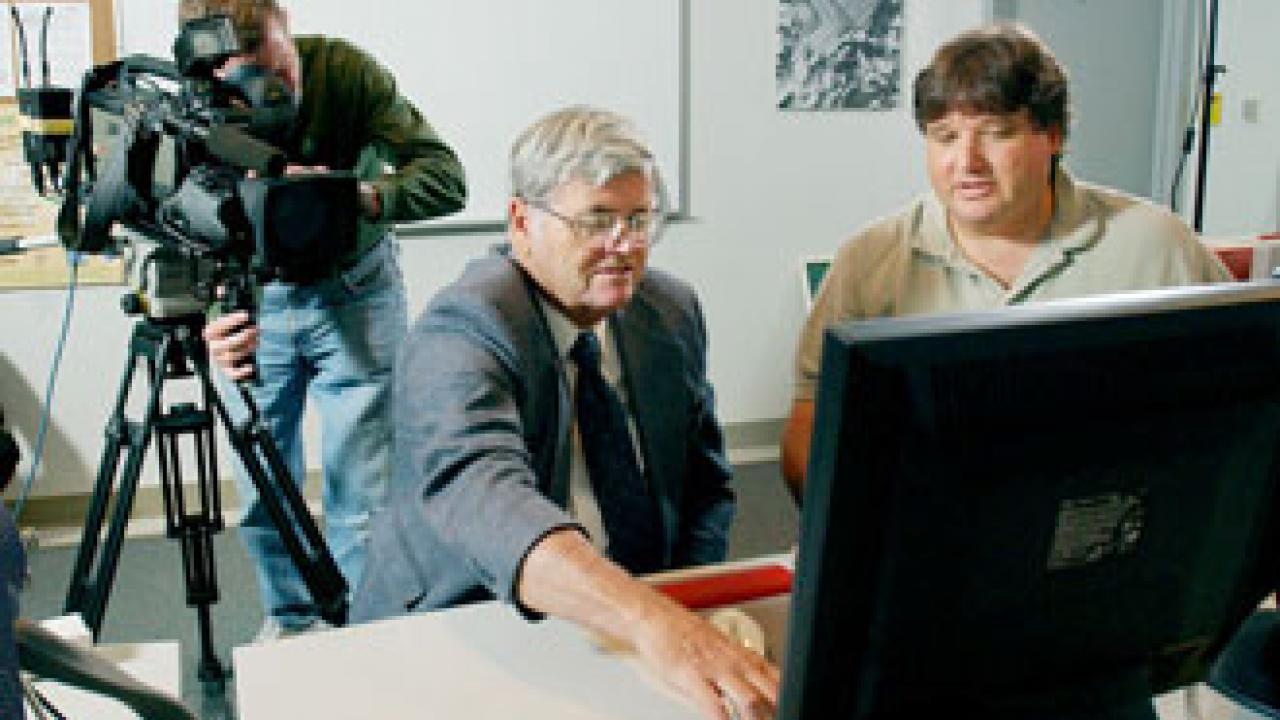The fuming World Trade Center debris pile was a chemical factory that exhaled pollutants in particularly dangerous forms that could penetrate deep into the lungs of workers at Ground Zero, says a study by UC Davis air-quality experts.
The research helps explain the very fine particles and extraordinarily high concentrations found by an earlier UC Davis study, the first to identify very fine metallic aerosols in unprecedented amounts from Ground Zero. It will be essential to understanding the growing record of health problems, researchers say.
The conditions would have been “brutal” for people working at Ground Zero without respirators and slightly less so for those working or living in immediately adjacent buildings, said the study’s lead author, Thomas Cahill, a UC Davis professor emeritus of physics and atmospheric science and research professor in engineering.
“Now that we have a model of how the debris pile worked, it gives us a much better idea of what the people working on and near the pile were actually breathing,” Cahill said. “Our first report was based on particles that we collected one mile away. This report gives a reasonable estimate of what type of pollutants were actually present at Ground Zero.
Cahill, an international authority on the constituents and transport of airborne particles summarized the new study last month at the national meeting of the American Chemical Society, held this year in New York City.
Cahill heads the UC Davis DELTA Group (for Detection and Evaluation of Long-range Transport of Aerosols), a collaborative association of scientists at several universities and national laboratories. The new study reinforces and extends conclusions that DELTA Group reached in February 2002 in what is still the most extensive analysis of the dust and smoke from the hot collapse piles after the trade center collapse.
In 2002, DELTA researchers described their analysis of over 8,000 air samples collected Oct. 2-30, 2001, on a rooftop one mile north-northeast of the trade center complex.
They detailed very high levels of very fine airborne particles — particles that pre-Sept. 11 EPA summaries had showed could raise a person’s risk of lung damage and heart attacks. Now the researchers have added analyses of samples collected through May 2002, and constructed a timeline with physical and chemical explanations for the results.
The new study also confirms, Cahill said, that the very fine particles observed were almost totally from the trade center debris pile and not from other upwind sources, such as power plants and the diesel trucks used to haul away the debris.
The debris pile burned until Dec. 19, 2001. In that hot pile, some of the debris’ constituent elements combined with organic matter and abundant chlorine from papers and plastics, and then escaped to the surface as metal-rich gases. By May 2002, pollution levels had dropped by 90 percent, Cahill said.
